Sony Tablet S Review
(Updated: November 21, 2011) The Sony Tablet S marks the company's first foray into Android tablets. The 9.4-inch slate ($500 for 16GB, $600 for 32GB, prices as of November 21, 2011) is no run-of-the-mill iPad lookalike, though. The Tablet S shows that the consumer electronics giant has not lost its design mojo over the years, as this model brings Sony's originality and flair to a tablet market that desperately needs both.
What distinguishes the Sony Tablet S isn't its specs, which are fairly standard, but its design. Sony's attention to detail is hard to miss.
'Wedge' Design: Refreshingly Unique
What makes the Tablet S unique, for starters, is the tablet's tapered design, which grows from 0.3 inch at its thinnest edge to 0.79 inch at its deepest. The Tablet S eschews the usual flat-slab look. Sony says the design was influenced by the curve of a folded-around magazine.
Sony has sacrificed the slimness of an Apple iPad 2 or a Samsung Galaxy Tab 10.1 in favor of something distinctively pleasing to hold. The unusual design offers two benefits: First, at the thicker side, the plastic curves around the edges, making the device comfortable to hold. Everything on the screen flips orientation based on the accelerometer, so you can hold the tablet just as comfortably in your right or left hand. Second, the wedge design provides a gentle incline for typing, making this tablet more natural to use than the flat slabs.
The Tablet S weighs 1.33 pounds according to Sony, which puts the new device on a par with Apple's iPad 2. However, the effective weight feels different, because the wedge design of the Tablet S also accommodates an off-center weighting of the components inside. This has the net effect of making the tablet feel as if it weighs less than it does. In a side-by-side test, the iPad 2 seemed just a tad heavier--even though it really wasn't.
A Typing-Friendly Tablet
Sony's attention to detail doesn't stop there. The tablet is clearly optimized for use in a landscape orientation. And in that position, I found that my fingers naturally fell to where the power and volume buttons were, in the sloped, indented right edge of the tablet; plus, I liked how natural the flow felt as I pressed the power button to wake the device and then swiped my finger to unlock Android 3.1.
Sony made numerous interface changes, as well. The company stopped short of doing a full rework, as Samsung did with its Galaxy Tab 10.1; instead, Sony tweaked the standard Android Honeycomb interface, making tasks more intuitive to perform. It also added useful widgets and shortcuts to the home screen, and included a tile-based Favorites screen (shown first at the tablet's unveiling earlier this summer). Lastly, Sony completely transformed the look of the apps menu to make app icons easier to navigate.
Sony has replaced the stock Android keyboard with its own keyboard design, too. I liked the layout of the Sony keyboard a lot, largely because I didn't have to think much about what was where. In some views, such as for entering a password, the width of the keyboard reduces so that a number pad can appear on the same screen. I wish more tablet keyboards raised the number pad up a level--or at least gave the option to do so.
Tablet S Adapts Easily to Your Routine
One of the things that made the Tablet S stand out for me is the way it complemented how I wanted to use the tablet.
It's easy for me to tell you how surfing the Web with the Tablet S or reading a book on it from the couch was a breeze, but what I really like is the attention Sony paid to how someone might use the tablet. For example, with the tablet's built-in IR blaster app and Sony's well-designed remote control app, I had no trouble turning the Tablet S into a universal remote for controlling my home theater components, including multiple DVD recorders, Blu-ray players, and televisions, regardless of the manufacturer or age of each component.
Dream Tablet for Gamers
Another feature that has tons of potential: The Tablet S and the smaller Tablet P (which releases later this year) are the first tablets to be PlayStation Certified. On-board you get the PlayStation hits Crash Bandicoot and Pinball Heroes. Never mind that Crash is a throwback to 1996-era gaming; I still found this port to the Android platform entertaining and compelling. The potential is huge given Sony's library of titles--and that potential only gets multiplied if the company were to ever tie in PlayStation Portable or PlayStation 3 games. Sony is slowly ramping up the titles available; by year-end it hopes to have a couple dozen games, with more on the way. Regardless, with this feature (and with support for PlayStation game controllers), Sony clearly differentiates its tablet for the gaming crowd.
When you add up the pluses of the Tablet S, suddenly Sony's pricing feels a bit more reasonable.
Getting Up Close With the Tablet S Display
For a Honeycomb tablet, the Sony Tablet S specs sound fairly familiar: a 1GHz Nvidia Tegra 2 dual-core processor, 1GB of RAM, and 16GB or 32GB of storage.
The display, however, measures just 9.4 inches on the diagonal, which makes the Tablet S unique among its competitive set for now. Interestingly, the rumor mill had pegged Amazon as offering a 9.4-inch display, but in fact Sony looks to be the first out the gate with that size. The overwhelming majority of Android 3.x Honeycomb tablets have a 10.1-inch display; only a handful have strayed, including Acer's 7-inch A100 tablet and T-Mobile's 8.9-inch G-Slate tablet. (The Sony Tablet S measures 9.5 by 6.8 inches, and, as mentioned earlier, 0.3 inch at its thinnest edge.)
The display's resolution, 1280 by 800 pixels, is the same as that of the 10.1-inch competition. And the display benefits from Sony's TruBlack technology, borrowed from HDTVs. The technology reduces the air gap between the LCD layer and the glass layer by filling in the space with a clear gel that reduces the light reflectivity to mitigate glare and increase sharpness and contrast. As with most any LCD tablet, the screen is still an unusable mirror in bright light and direct sunlight. In ambient light, however, the display looks better than most, judging from my casual use testing.
Buttons, Cameras, Ports, and Jacks
My test images looked impressive on my unit, exhibiting fine detail and generally good color handling, though the Tablet S had difficulty handling the natural colors of skin tones.
The front-facing camera is just 0.3 megapixel, while the rear-facing camera is 5 megapixels. It tested as one of the better tablet cameras we've seen.
Along the left edge, the tablet has a headphone jack and a secure flap that covers the SD Card slot and Micro-USB port. The port is more for sideloading content via the PC than anything else, while the SD Card slot is handy for viewing media; unfortunately, the slot is there only to transfer media from the card to tablet, not to serve as bona fide usable expansion as on theToshiba Thrive, for instance. Sony says this situation may change with a future firmware update.
At the bottom is Sony's proprietary docking port and charger. I could understand this part being proprietary if the tablet recharged quickly, at least. In our tests, however, this model required 3 hours, 19 minutes to charge--not as much as some competing models, but a disproportionately long time given that the battery lasted only 4 hours, 44 minutes.
Tablet S: Software and Usability
The Tablet S brims with additional hardware and software tweaks that set it apart from the rest of the competition. For example, Sony added its own software algorithm to the touchscreen's firmware to analyze finger movement and improve responsiveness. Also nice is the redesigned apps menu, which permits you to make icons larger and allows for custom views such as sorting apps alphabetically or newest first. Another customization, the promising Sony Favorites page, has a tile-structured design; in use, though, I found it more limited than I would have liked, with its heavy focus on showing my most recently added, played, or viewed content.
Speaking of apps, Sony provides a slew of custom apps. Sony's Gallery app replaces the native Google gallery. Sony also includes its own music player, which produces far better audio than the Google native player that ships with the Android OS. In my informal tests Sony's music player boosted the loudness, bass, and overall sound quality significantly. Regrettably, the improvement is audible only through Sony’s player; if you use the Pandora app, for instance, you’re out of luck. And Sony’s player has limited features (for example, you can play by album or artist, but you don't get track-level access). One convenient feature in Sony’s own gallery, music player, and video player is the ability to throw a piece of content over to any DLNA device the tablet detects. This throw capability, together with the Tablet S’s DLNA support, may explain the unit’s lack of an on-board HDMI port.
The Tablet S has links to Sony's stores on the Web, Music Unlimited and Video Unlimited, as well as to the Reader store; however, the sites were not ready at this writing, so I couldn't tell how optimized the experience was for use via the tablet. What was available: Sony’s Chumby for Sony Tablet. Sony ported the Chumby apps used on the Sony Dash for its tablet, which opens up plenty of options for how you can engage with the Tablet S.
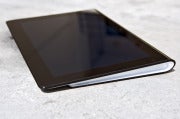
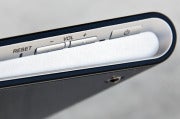
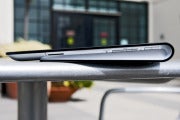
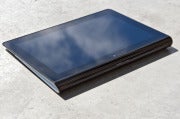
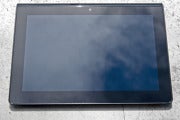
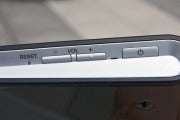
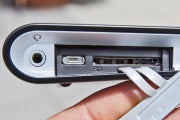
No comments:
Post a Comment